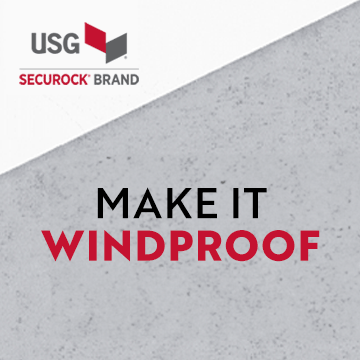Price per Square
« Back To Roofers TalkI always quoted high and then asked the customer what they wanted to pay When I was in Broward county back in 1970 the so called going rate on tear off and replace 3 tab Shingles was 150 and up heavy weights were 200 & up BUR was 200 per sq off and on, modified just was coming in to play and that start at 350 off and on. Large commercial jobs say 2000 sq & more the bur would be 300 plus insulation. I would quote a 3 tab reroof for 200 per sq and go from there when I moved up to St lucie I quoted the same way and people laughed at me they were paying 90 per sq for a 3 tab reroof. You have forget about competition and go out and sell your product forget about the going rate. The customer will tell you what they want to pay. It will be up to the sales person to get those numbers, I used to go thru my pitch and the customer would say wow that sounds like an expensive system, I would counter by saying expensive compared to what, it all about presenting you pitch and getting the customer to want to buy from you everybody is out there selling when you get that customer wanting to buy then you have a sale.>>>
Ya know, Eric, the roofing trade has shown us some very interesting enterpreneurial models, and together with the graduate-level lessons taught by AIG, Citi, Merryl-Lynch, and related company, plus the creative financing options pioneered by Ponzi and taken to new heights (lows?) by Madoff, we could start a new business school...
The Higher Institute of Social Observations and Heuristic Knowledge (AKA SOHN)will teach two tracks - How to... and how to protect against...
Given the life-long learning model, degrees will be awared on a memoriam basis, however fees will be collected prepaid. The coat of arms will feature a shield, a screw, a hammer, a sword and tongs, the arrangement thereof depending on the academic track chosen.
Yes, it does have possibilities.>>>
We need to expand the range of the prospective alternatives a little. There is the Platinum Screw model. The Ivory Screw model. The Self-tapping Screw model. (This one is for any self-satisfied salesmen lurking) The use of Escrew accounts to guarantee equitable performance. And then at last there is the question of which driver is being used.
(j/k)
>>>
Yeah, yeah, yeah................
We had this conversation in Florida last February, as I recall.
To me, that IS detail oriented. I only learn after being smacked up along side the head by the obvious a few times. LOL>>>
Mike H Said: ... Hes the most detail oriented individual Ive ever met...
Hoo, boy, have you got me pegged wrong, Mike! I HATE detail! It bores the living C.R.A.P. outa me! It drives me up the wall!
Unfortunately, details are like bricks - miss a few in the wall, and it can be seriously compromised. And basically, I'm an old fart who is very lazy - I hate doing anything more than once if I can avoid it, and paying attention to the detail is one way to prevent multiple repetitions.
But I still hate details! I just wish my co-workers would be as adverse to extra work as I am! :woohoo:>>>
Nice post Paul.
Roofrite, it you ever met him, you'd soon see why he chooses to bang his head against the nearest wall or table. He's the most detail oriented individual I've ever met.
It is funny how we can all be so different, yet struggle with the same frustrations, and all find out way of dealing with them.>>>
You are funny man ! I can relate.>>>
Roofrite, if we ever meet, you'll recognize me as the guy with the flat forehead (and slightly dented glasses). Comes from my chosen method of relieving stress and frustration.>>>
pgriz... I want to meet you ...you sound like my kinda people...Great literary talent you have there.....and the models are so accurate combined with the wit and humor I can't stop laughing every time I read it.>>>
The price depends on the business model you use.
The Short Screw model allows you to set the price at whatever the customer is prepared to pay. Warranty can be as generous as you want it to be. Costs are kept low by not paying the suppliers, the government, and the employees. While technical skill is not required in this business model, the ability to move and create new identities is very helpful. Reinventing yourself becomes a way of life.
The Medium Screw model pricing is higher than the Short Screw model. After all, you will install the product you sold the customer. However, to reap maximum tax benefits for your customer, you will not remit any to the government, as they will just waste it. This applies to sales taxes, permit fees, workmans comp, etc. Kash is your friend. When your old customers want to look you up, make sure you have a good name like Smith or Jones, so that they can find 23 million google hits. To give your customer full value on their warranties, remember to print it on good paper using a laser printer, because you don’t want ink smears on their behinds when they use it for its intended purpose.
The Long Screw model is the premium price model. You sell the customer your reputation (no lawsuits), your longevity (at least one year in the business), and your shiny new trucks. Roofers with shiny new trucks always do good work. Your contracts are preprinted (not hand-written or printed on a cheap inkjet), and use at least two colors of ink. Your warranties have elaborate and pretty calligraphy along the borders. Your workers have years of experience (and some of it in roofing). You pay your suppliers on time (usually), you declare your workers (most of them) and remit the workman’s comp, and you scrupulously mail in your tax remittances (at least for the jobs done on written contracts). However, to make ends meet, you need to make sure your employees understand that time is money, and you’re not paying them for farting around with the details. Production is KING. This model is good for at least several years, but is not as lucrative as the previous two.
There are other business models in use which may be appropriate for you, depending on your goals and talents.
Seriously, though. What the guys already said. Price depends on your labour force experience, skill, and thoroughness, your material costs, your overhead, your degree of risk taken on (that’s the warranty(ies)), your profit targets, your ability to sell, and your ability to install. Ideally, you know exactly the production rate your installers are capable of, your salesman(or woman) defines precisely what needs to be done, your installers know the materials they are working with very well and have mastered the intricacies of installation, so that you have no great liability against your company in terms of warranties, and your pricing model has taken into account the historically-proven installation rates, efficiencies, waste factors, etc.
If this foundation is not laid soundly, then it doesn’t matter what you charge – you will not stay in business very long. >>>
the going rate or going out of business rate? :blink:>>>
Very good and wise advise From Mike H in the Overhead topic. ................... For years we struggled with overhead for years, one year we made money, one year we didn't. We marked our costs up 30% for overhead and that total we marked up 20% for "profit". In effect, when the calc's were done, we marked out direct costs up 56%. It didn't always work.
In 1994 we started taking last years financial information, took every expense that was not labor, material or subcontractor, and divided that number by the total labor cost.
This gave us an overhead figure that was represented as a percentage of our labor.
For the next year's estimates, we calculate our overhead by multiplying the estimated labor by that overhead percentage. I can tell you it has run from between 150% and 200% of our labor costs every year.
Ever since adopting this method, our financial year end has mirrored what we anticipated from our job completion reports. Every contractor that I know, who has adopted a time based labor overhead calculation, be it a daily, hourly or labor percent basis, has said their financial bottom line has stabilized. FREE YOUR MIND>>>
Furthermore you need to be asking your questions on the DIY forums !>>>
This posting is ridiculous! Yet another example of why the industry and every trade industry is going down the tubes ! I carried my first bundle of shingles when I was 12 years old and I'm 53 now.
Msshottet I wouldn't give you the time of day !>>>
I know all of what you ask about current pricing. However if I told you , it would be similar to.... if I gave my kids money to bail them out every time they asked . Or if someone asked me for a fish and I kept handing out fish to them . Instead , one could teach someone to fish for them selves and they would know and not have to ask. They could depend their own instincts and business model. It is better for every one concerned . FREE YOUR MIND>>>























